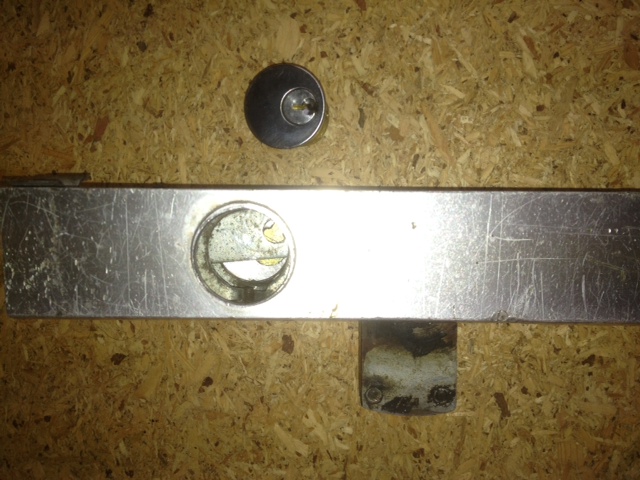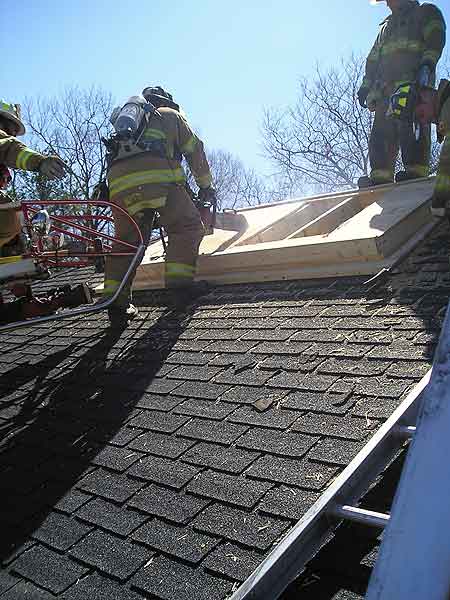Article and photos by David DeStefano
As a follow up to the previous engine company article and in the interest of equal time, we will explore some of the ways firefighters can maintain and improve our basic ladder company skills.
Maintaining a sharp edge in the ladder company may be challenging because of the many skills basic ladder company functions require. Although many cities across the country are facing an increase in responses, working fires are generally down. Even ladder companies in busy areas may not have the opportunity to hone all their skills at every worker.
Traditional truck company functions include:
- Forcible entry
- Search and rescue
- Ventilation
- Salvage and overhaul
To maintain effectiveness and the “sharp edge” required of a superior truck company, members must continuously train on the skills required to accomplish the functions in a ladder company.
FORCIBLE ENTRY
Conducting forcible entry drills at the company level requires imagination and often some foraging skills; however, with a little effort, a number of basic props can be obtained or built for use in the firehouse in between sessions at the department training facility. A simple and effective prop that can be used to brush up on through-the-lock skills consists of a cut down piece from a narrow stile tubular aluminum door (photo 1). Old doors can often be obtained at demolition sites or renovation projects in the ladder company’s district. A portion of the stile containing the lock can be cut with a rotary saw and mounted to a base or used as a handheld prop.

(1) A door stile with lock can be easily obtained and is valuable for practicing through-the-lock forcible entry.

(2) A window bar prop may be used repeatedly with steel reinforcing rods substituting for window bars. Members will have the opportunity to work with a rotary saw in various positions.
Another forcible entry challenge can be practiced by simulating window bars with a simple box prop and several steel reinforcing rods that act as bars (photo 2). The frame can be mounted or placed at different heights or positions to allow firefighters to practice holding the rotary saw different ways to become proficient in numerous scenarios. The steel rods may sometimes be obtained by asking project managers at local construction sites; they may even be donated by a local supplier.
VERTICAL VENTILATION
Vertical ventilation is a skill not often practiced anywhere but on the fireground or in the training center drill yard. Constructing a basic 4 × 8 box prop with slides for a sheet of oriented strand board (OSB) or plywood will enable you to use the apparatus ramp or any other small space for realistic saw training (photo 3). This prop may be used on the ground to simulate a flat roof or placed on an angle against a wall to simulate a peaked roof. It allows members drill time with both rotary and bar saws; it is especially helpful when members transfer into the company and need a little polishing of their saw technique before working on the roof. Establishing a rapport with the manager of the local “big box” home improvement store is key to maintaining a supply of OSB or plywood sheets. Many times, the store will have damaged sheets that can’t be sold but are ideal for our purposes.

(3) The roof prop is easily constructed, and is shown here affixed to the roof of an acquired structure. Firefighters may use rotary or bar saws to cut a simulated roof deck in order to build or maintain their skills.
RAISING LADDERS
Many other important skills should be sharpened on a regular basis, including raising ground ladders under various conditions. Every firefighter has raised ground ladders at quarters or at the training center drill yard on flat pavement with plenty of open space. Company members should seek a location that features geographic and occupancy issues that may hamper efforts to raise a ground ladder. Municipal buildings during non-work hours are often good places to drill, since the fire department may have permission to use the property as long as no damage is done. The company officer should select a position that affords a difficult raise, like an alley or a structural obstruction. A scenario can then be devised where the company needs to raise a ladder to perform a particular task in that area. Company members should practice how they play, wearing full personal protective equipment and self-contained breathing apparatus. The scenario should include the transport of the equipment required for the task. This may mean placing a saw and hooks or other tools on the ladder and using a flat carry to tote all the equipment in one trip with limited personnel.
**
The skills we have discussed represent basic truck company work. The ability of all members to use these skills to accomplish truck company objectives is the key to successful firefighting operations. With some planning and effort, company officers can create a series of company drills using these simple props and methods, and for other fundamental skills as well, to help maintain a company’s sharp edge and ensure a safe and an efficient operation.
David DeStefano is a 22-year veteran of the North Providence (RI) Fire Department, where he serves as a lieutenant in Ladder Co. 1. He previously served as a lieutenant in Engine 3 and was a firefighter in Ladder 1. He teaches a variety of topics for the Rhode Island Fire Academy. He can be reached at dmd2334@cox.net.
MORE ON THE LINE
- Maintaining a Sharp Edge: Engine Company
- Recognizing the Suburban/Urban Interface
- Carrying a “Bag of Tricks”
- On the Line: Waiting for the Big One

